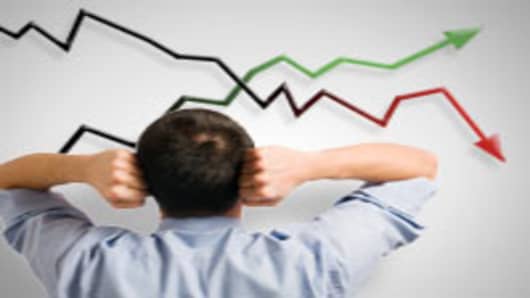Economists largely—though not universally—bemoaned the numbers that showed nearly half the increase came from inventory rebuild amid continued reluctance by consumers to spend money.
"On balance, we see little in the first look at these numbers to alter our view that the economy will remain sluggish in the period immediately ahead," Jan Hatzius, chief US economist at Goldman Sachs, said in a note to clients.
Investors seemed unsure of what to make of the GDP reading, as stocks seesawed through Friday's session. The number was only a shade under the 2.5 percent consensus forecast, but the Wall Street whisper number was looking for a GDP print as high as 4 percent.
Stock index futures sold off strongly after the data was released. But the market rebounded, and turned momentarily positive as afternoon trading progressed before slipping.
"Basically, this is not a surprise. The market's not going to pay that much attention to it," said Quincy Krosby, market strategist at Prudential Financial in Newark, N.J. "Ultimately there will be revisions and by the time you get to the third revision, the market is looking at 2011."
If anything, the weak GDP and the likely reaction from the Fedmakes for a more hospitable environment for corporate bonds, Krosby said.
"People are desperate for any yield they can get," she said. "The Fed keeping rates this low is allowing for balance sheet repair across the board. Along these lines, it's allowing for companies to come to market issuing debt."
The weak-growth low-interest-rate environment is likely to continue for at least a few more quarters, particularly considering that first-quarter growth was revised upward to 3.7 percent. That represents a peak-to-trough drop of GDP since the recovery began of 4.1 percentage points.
As such, Nomura is predicting less than 2 percent growth for the second quarter, while Capital Economics in London lowered its GDP forecast from 3.5 percent to 3 percent.
"The big story from the annual revisions incorporated into this release is that consumption growth was consistently a lot weaker than we thought over the past couple of years," Capital's chief economist Paul Ashworth said in a note to clients. "The only silver lining to that is households appear to be saving a lot more, too."
The savings rate increased to 6.2 percent for the quarter, which also has a good news-bad news impact. The good news is that households are regaining some strength, the bad news is that cash reserves are not making their way into the marketplace.
"Right now business investment is in the driver's seat of the economic recovery. Consumers are somewhat in the back seat," Stuart Hoffman, chief economist at PNC Financial Services in Pittsburgh, told CNBC (see video). "To sustain economic recovery, you do need consumer spending to get into the driver's seat."



